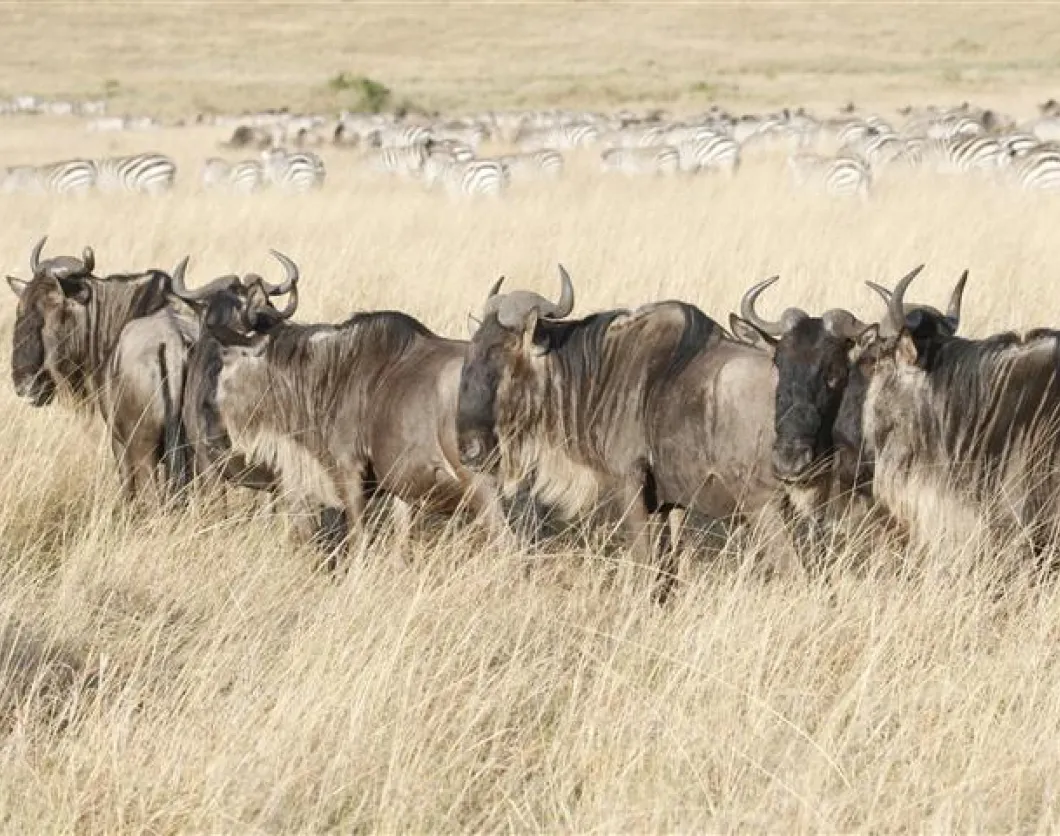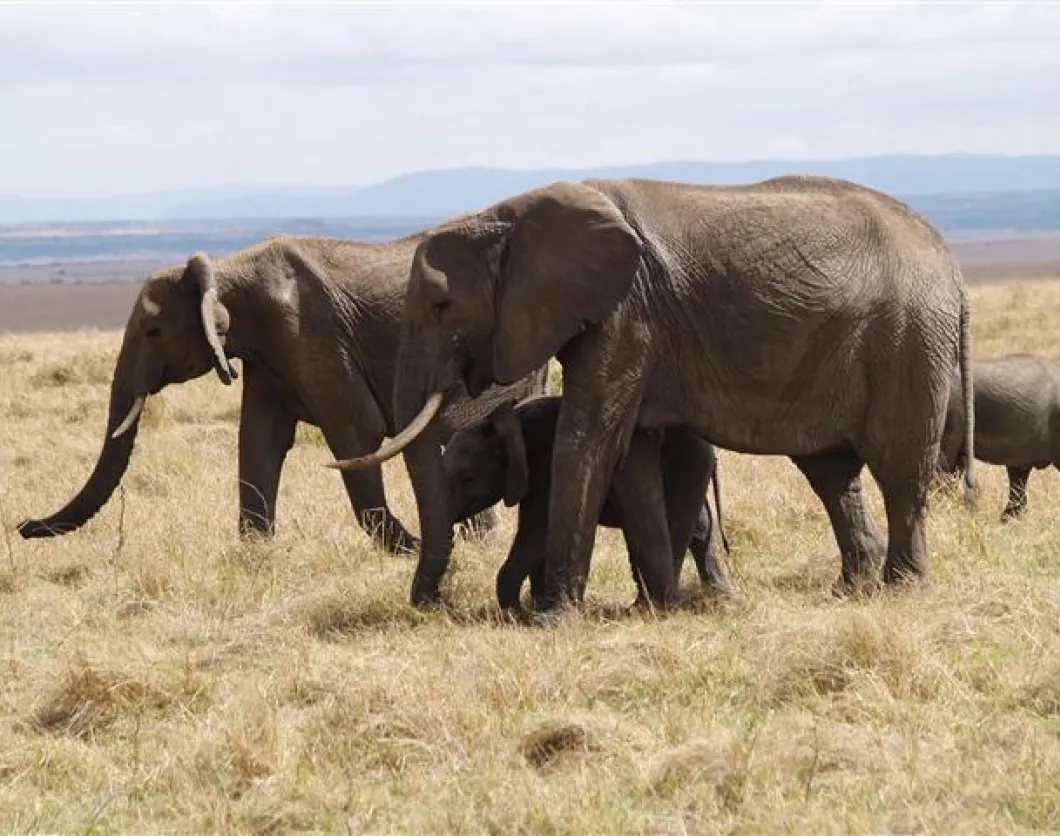Masai Mara National Reserve is without question my family's most memorable holiday spot. We drove down to the park as part of a 3-day safari package which incorporated a Masai Mara lodge accommodation, transport and a professional guide.
The 270 kilometer (169 mile) journey from Nairobi took us 5 and a half hours. Although a stretch of the road was unpaved and extremely bumpy and dusty, there were some welcome distractions that more than canceled out this teeth-rattling experience.
One of these distractions was the spectacular Great Rift Valley. At a viewing point along the Naivasha Road, we found ourselves standing on a steep escarpment with a stunning panoramic view of the gigantic natural trough several hundred meters below.
The other was the herds of zebras, impalas and giraffes dotted on the roadside and which provided a sneak preview of the wildlife experience that awaited us.
Masai Mara Animals
We had read that the Masai Mara National Reserve sustains 2 million heads of game. That it boasts the largest-bodied, fiercest and by far the continent's highest concentration of lions (their number is in the thousands by the way) and other big cats such as cheetahs and leopards.
So naturally, we were filled with a lot of anticipation as we entered the game reserve. Then we began to check off the animals as we sighted them and boy, were we mesmerized!
Picture this... Thousands upon thousands of wildebeest roaming the vast lush savanna. Countless herds of zebras, gazelles and buffaloes and other animals we didn't even know existed such as the duiker, kudu, dik-dik, klipspringer, and oribi grazing on the plains, adding to the surrealism of the Masai Mara escapade.
A herd of elephants ambling across the dirt track in front of us. We drove on in order to get a closer view of these larger than life animals. The matriarch flapped her ears furiously and rumbled. We back off. Fast. A solitary adult elephant. Perhaps all its teeth had fallen out due to old age and it was now wandering off to die? We will never know.
A lion strutting across the savanna – if only he could roar! A pride of lions (lionesses more like) lazing on an edge of the plains completely unfazed at several dozen tourists scrambling to get a piece of the action.
A cheetah stalking a herd of several hundred wildebeest single-handedly. Another cheetah with her cubs perched on a mound of earth scanning her surroundings for easy prey. A Masai giraffe elegantly browsing on an acacia tree and a herd gracefully galloping across the savanna. A couple of chubby hippos and crocodiles basking on the rocky Mara River banks.
A pack of hyenas attempting to harass some hapless lion cubs off their meal. A dozen vultures getting a bird's eyeview from a baobab tree. They then circle a pack of hyenas noisily gobbling a wildebeest carcass, pensively waiting their turn. A myriad of multicolored birds chirping away in the shrubs.
We did not see a leopard though. Although our experienced guide pointed out a leopard crouched on a tree branch, the lush leaves acted as a perfect camouflage and we really could not decipher it – not even with the help of our (admittedly small) binoculars. Therefore, be sure to carry a powerful pair of binoculars for your Masai Mara safari.
Wildebeest Migration – Nature's Spectacular Phenomenon
Ironically though, the Masai Mara National Reserve's fame is attributable, not to any of the "big cats" at the apex of the animal kingdom hierarchy but to the less charismatic wildebeest.
We pitched camp (figuratively of course – it's always best to remain in your vehicle!) by the Mara River and witnessed "the greatest game show on earth" as the wildebeest literally came in search of greener pastures from the drier Tanzanian Serengeti National Park.
Thousands of wildebeest made it across the river that day. But a good number also perished during the river crossing either because they drowned in the heavy tides, were devoured by the waiting crocodiles or tripped by hippos (maliciously I think because these are herbivores). In a sense then, the wildebeest migration is a kind of a "survival for the fittest" test. The African wildebeest migration is easily one of Kenya's definitive safari experiences and was the icing on the cake that was our safari.
There are several luxurious tented camps in Masai Mara and midrange Masai Mara lodges where you can stay to witness this spectacle. Indeed, the annual wildebeest migration was befittingly voted "one of the New Seven Wonders of the World" by a jury of experts polled by US' ABC Television in 2006.
Just outside the Masai Mara National Reserve, we visited a Masai village where we spoke to and danced with the fascinating Masai people and generally got a feel of the Masai culture we had heard so much about.
As we grudgingly headed back to Nairobi, we were all glad we had swapped the hustle and bustle of Nairobi for the Masai Mara for a while. Indeed, the Masai Mara National Reserve had lived up to its billing as the New York of all wildlife sanctuaries here in Kenya and possibly, the world over.










